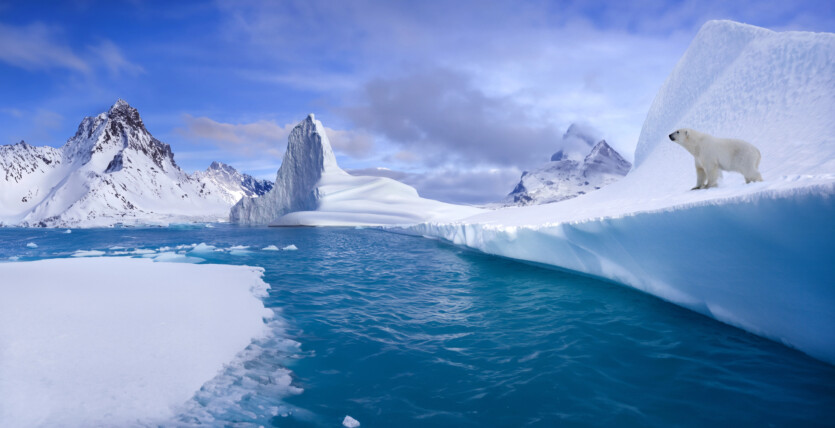
Scientists are reviewing scenarios of the effects of warming in the Arctic and melting of glaciers after an error in climate models was discovered.
In particular, Japanese researchers Momoka Nakanishi of Kyushu University’s Interdisciplinary Graduate School of Engineering and her advisor, Dr. Takuro Michibata of the Applied Mechanics Research Institute, have suggested that clouds may be responsible for the accelerated warming in the Arctic.
Currently, the Arctic is warming 3-4 times faster than the rest of the world. Current climate models cannot explain why this is happening. Japanese scientists explain that the most common clouds over the Arctic are mixed clouds, containing both ice crystals and supercooled liquid water droplets. In summer, these clouds reflect sunlight and help cool the Arctic. However, in winter, in the absence of sunlight, these clouds capture heat from the surface and send it back.
«However, how well these mixed-phase clouds retain heat depends on the ratio of ice to liquid. The more liquid clouds contain, the better they retain heat. But many climate models have a large error in representing this ratio, which leads to incorrect predictions,— explains Momoka Nakanishi.
Japanese researchers analyzed 30 climate models, comparing them with satellite images of clouds in the Arctic in winter over the past decade. They found that in 21 models, the ratio of ice to water was strongly overpredicted.
«These ice-dominated models do not properly account for the current potential for cloud warming in winter. That’s why they can’t explain the rapid warming we’re seeing now, — Nakanishi adds.
Meanwhile, the current underestimation of global warming rates by existing climate models leads to an overestimation of these indicators in the future. We are talking about errors caused by the feedback process of the cloud emissivity.
As the Arctic warms further, liquid water begins to dominate the composition of mixed clouds, which increases the ability of clouds to retain heat. Once clouds become so saturated with liquid that they behave like completely black bodies — completely absorbing and re-emitting heat — further warming begins to decrease.

Because most climate models underestimate how much fluid is already present in today’s clouds, they assume that an even more significant shift is ahead. As a result, they overestimate how much additional heat will be trapped in the future and predict that the feedback effect will last longer than reality suggests.
At the same time, scientists from Switzerland have found that even if temperature on the planet will remain at 1.2°C, 39% of the mass of glaciers will still melt compared to 2020, leading to a 10 cm rise in global sea level.
In the new study, an international team of scientists from 10 countries used 8 climate models for glaciers to estimate the amount of ice loss beyond Greenland and Antarctica. All the scenarios analyzed assume that glaciers will continue to melt rapidly over the next few decades. They will continue to melt, albeit more slowly, over the next few centuries, even in the absence of warming.

For example, studies that look at melting scenarios only through 2100 estimate that about 20% of today’s glacier mass will be lost regardless of how temperatures change in the future. However, a new study shows that under current conditions, almost twice as much ice will disappear when looking several centuries ahead.
«We found that about 40% of the mass of glaciers is actually «doomed to disappear», — explains the co-author of the study Harry Zecollari of The Free University of Brussels.
According to another co-author of the study, Liliana Schuster from the University of Innsbruck, the current size of the glaciers is significantly underestimates the extent of climate change that has already occurred. Shuster emphasizes that in fact, the situation with glacial melting is much worse than what can be observed in the mountains.
Harry Zecollari predicts that current policies will lead to a global temperature increase of up to 2.7°C. The scientist adds that a warming range of 1.5 to 3°C plays a key role in preserving glaciers, as a warming of 0.1°C poses a risk of losing about 2% of glaciers.
Research results are presented in the following journals Ocean-Land-Atmosphere Research; Science
Source: SciTechDaily

Spelling error report
The following text will be sent to our editors: